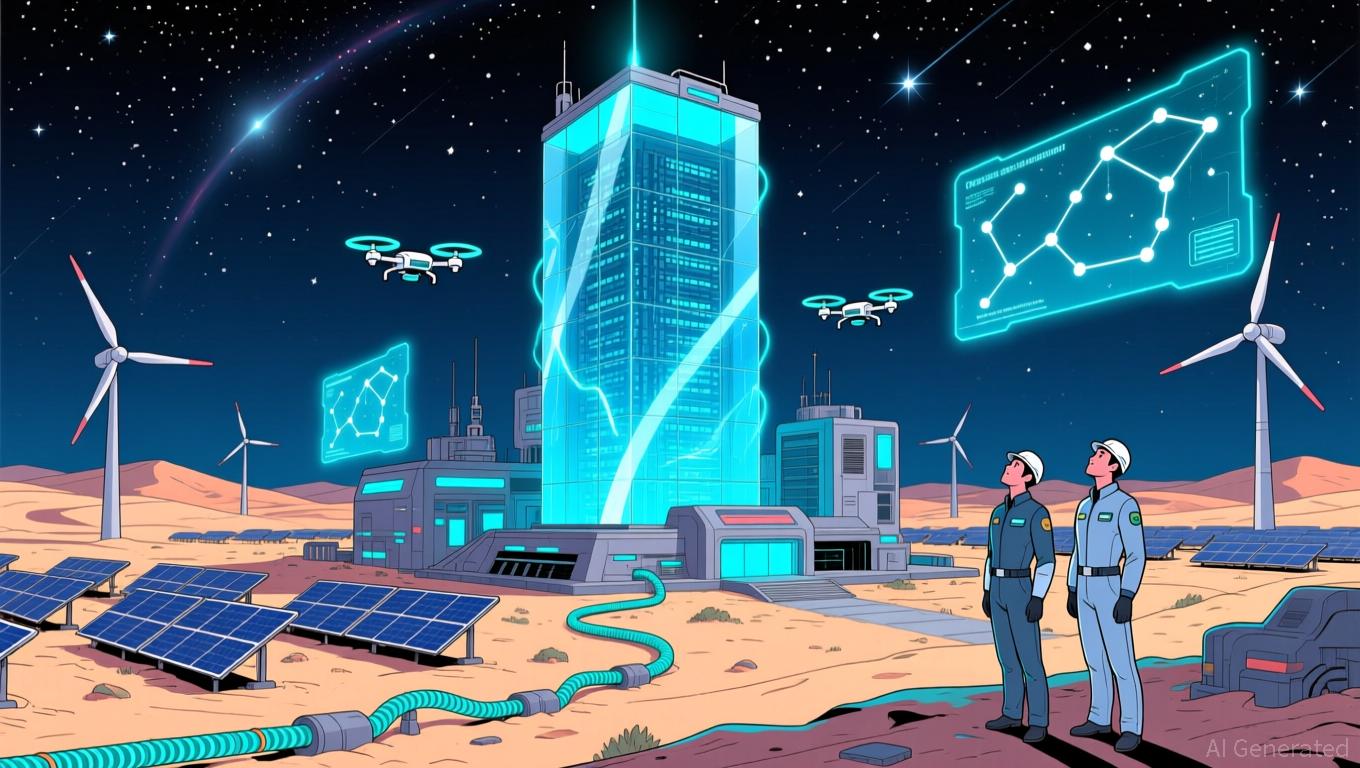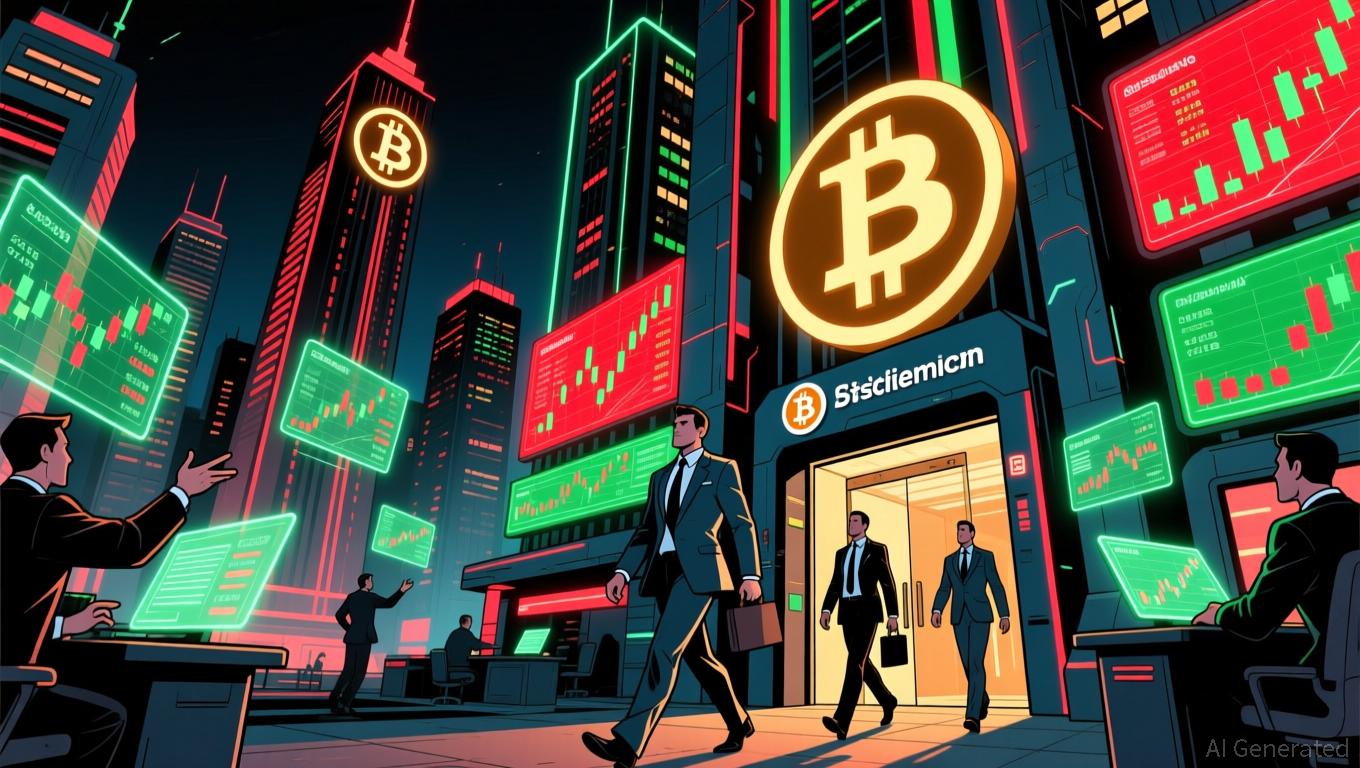Fed Weighs Job Growth Against Inflation Concerns in 2026 Interest Rate Decisions
- The Fed plans two 2026 rate cuts amid weak labor markets and stubborn inflation, balancing job support with inflation risks. - Internal FOMC divisions persist, with Vice Chair Jefferson advocating caution and Governor Waller pushing for aggressive cuts, while Trump’s appointee Miran amplifies easing pressure. - Incomplete data from a government shutdown complicates decisions, and market expectations for a December cut dropped to 42.9% amid inflation concerns. - J.P. Morgan urges diversification to hedge
The Federal Reserve is projected to lower interest rates twice in 2026 as officials contend with ongoing inflation and a softening job market, based on recent economic indicators and internal discussions. The Federal Open Market Committee (FOMC), responsible for setting rates, faces the challenge of loosening monetary policy to bolster employment without triggering a resurgence in inflation. This dilemma is evident in the differing opinions among Fed leaders, with Vice Chair Philip Jefferson urging caution against moving too quickly and Governor Christopher Waller
Fresh economic reports have strengthened arguments for rate cuts. ADP’s private-sector payroll data showed a weekly loss of 11,250 jobs in late October,
Political developments are also shaping the Fed’s strategy. Trump’s nomination of Stephen Miran—an outspoken supporter of swift rate reductions—to succeed outgoing Governor Adriana Kugler has increased calls for more aggressive easing. Kugler stepped down in August following
There are clear divisions within the FOMC. Jefferson, who often echoes Chair Jerome Powell’s perspective, advocated for a measured pace,

Market sentiment remains divided. Initially, traders saw a 93.7% likelihood of a December rate cut in October, but that estimate has fallen to 42.9% as officials voiced stronger concerns about inflation
Wider economic forces will also influence the Fed’s choices.
As the year draws to a close, the Fed’s next steps will depend on how it reconciles mixed economic signals. With the job market deteriorating and political pressures rising, inflation continues to exceed the 2% target. The December meeting will challenge the committee to strike a balance, and the first rate cut in 2026 is expected to occur early next year.
Disclaimer: The content of this article solely reflects the author's opinion and does not represent the platform in any capacity. This article is not intended to serve as a reference for making investment decisions.
You may also like
Bitcoin News Today: Bitcoin as Digital Gold, Ethereum as the Engine of Decentralized Finance: How Cryptocurrencies Are Carving Out Distinct Functions
- BlackRock executives highlight Bitcoin's shift toward "digital gold" as a long-term store of value, supported by institutional demand and fixed-supply models like Bitcoin Munari. - Ethereum's faster transaction velocity (3x BTC) reinforces its "digital oil" role, contrasting with Bitcoin's stable, passive accumulation strategy and macro-hedge appeal. - Regulatory clarity on stablecoins and blockchain transparency could deepen Bitcoin's institutional adoption while highlighting risks in altcoins like Aero

Stargate’s AI Strategy: Safeguarding the Nation or Raising Antitrust Concerns?
- Stargate, a $500B AI joint venture led by OpenAI, Oracle , and Nvidia , aims to consolidate computing power across seven gigawatt data centers in the U.S. and UAE. - Yale scholar Madhavi Singh warns the alliance violates antitrust laws by merging fierce competitors, risking cartel-like behavior and stifling innovation in chips and cloud services. - Critics argue Stargate eliminates competition in key AI sectors, while the Trump administration and lawmakers praise it as a strategic move to counter China,

Bitcoin Updates Today: Bitcoin Faces a Battle: DWF Issues Buy Alert Amid Market Turbulence
- DWF Labs buys Bitcoin at $84,000 amid 30%+ drop from $126,000 peak, signaling institutional confidence despite market turbulence. - U.S. market weakness highlighted by 21-day negative Coinbase premium (-0.0989%) and $3.79B ETF outflows, including $523M from BlackRock's IBIT . - Strategic buyers like Harvard (+250% IBIT holdings) and Japan's Metaplanet (¥15B allocation) contrast with $4B in realized Bitcoin losses and 35% drop in futures open interest. - Long-term bullish factors include U.S. Strategic Bi

Bitcoin News Today: "Institutional Embrace Helps Steady Bitcoin During Market Volatility"
- Bitcoin remains stable amid market volatility, with analyst Lyn Alden dismissing crash fears due to institutional adoption and macroeconomic factors. - Stablecoin reserves hit $72B, while Circle's USDC outpaces Tether and Solana secures $1B in institutional funding, signaling growing regulated crypto confidence. - Alden predicts $100K Bitcoin by 2026, attributing stability to extended cycles driven by macro demand rather than traditional halving patterns. - Diverging analyst views highlight risks, but Al
